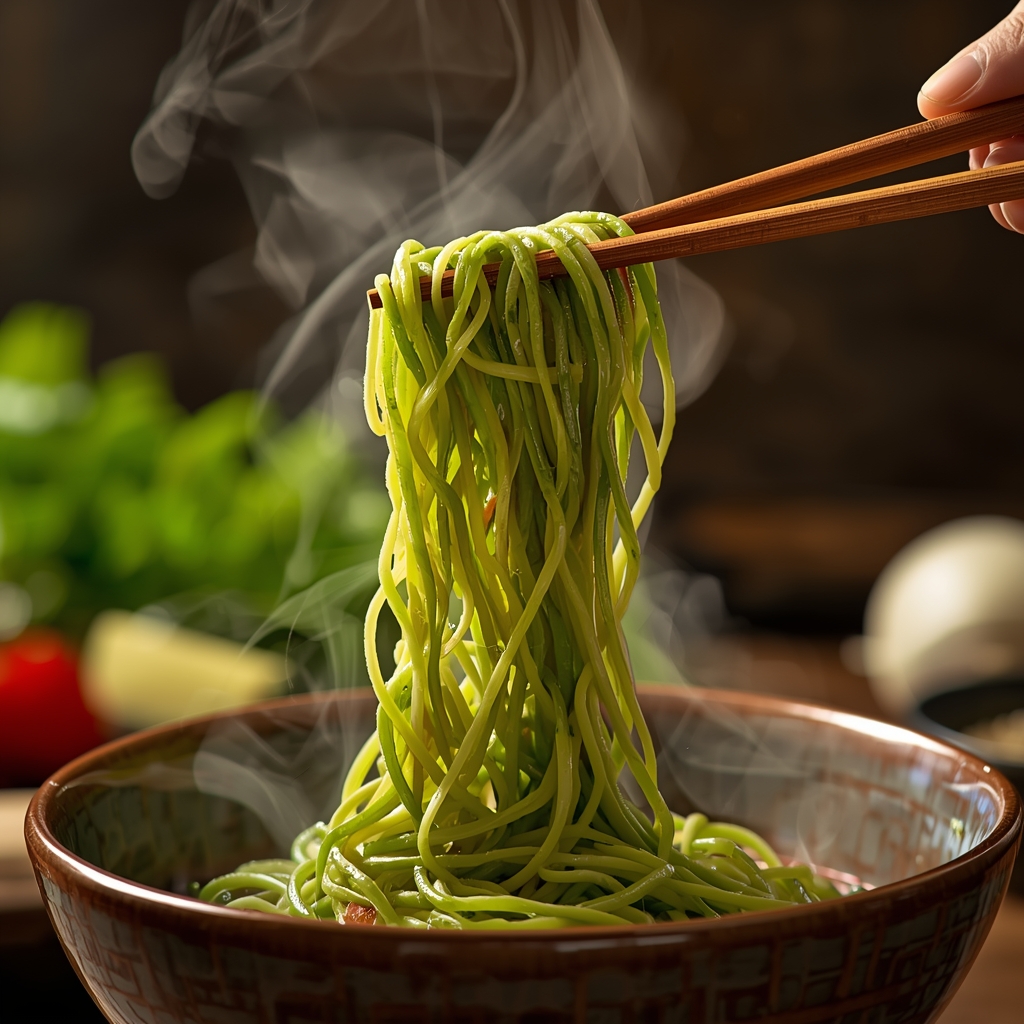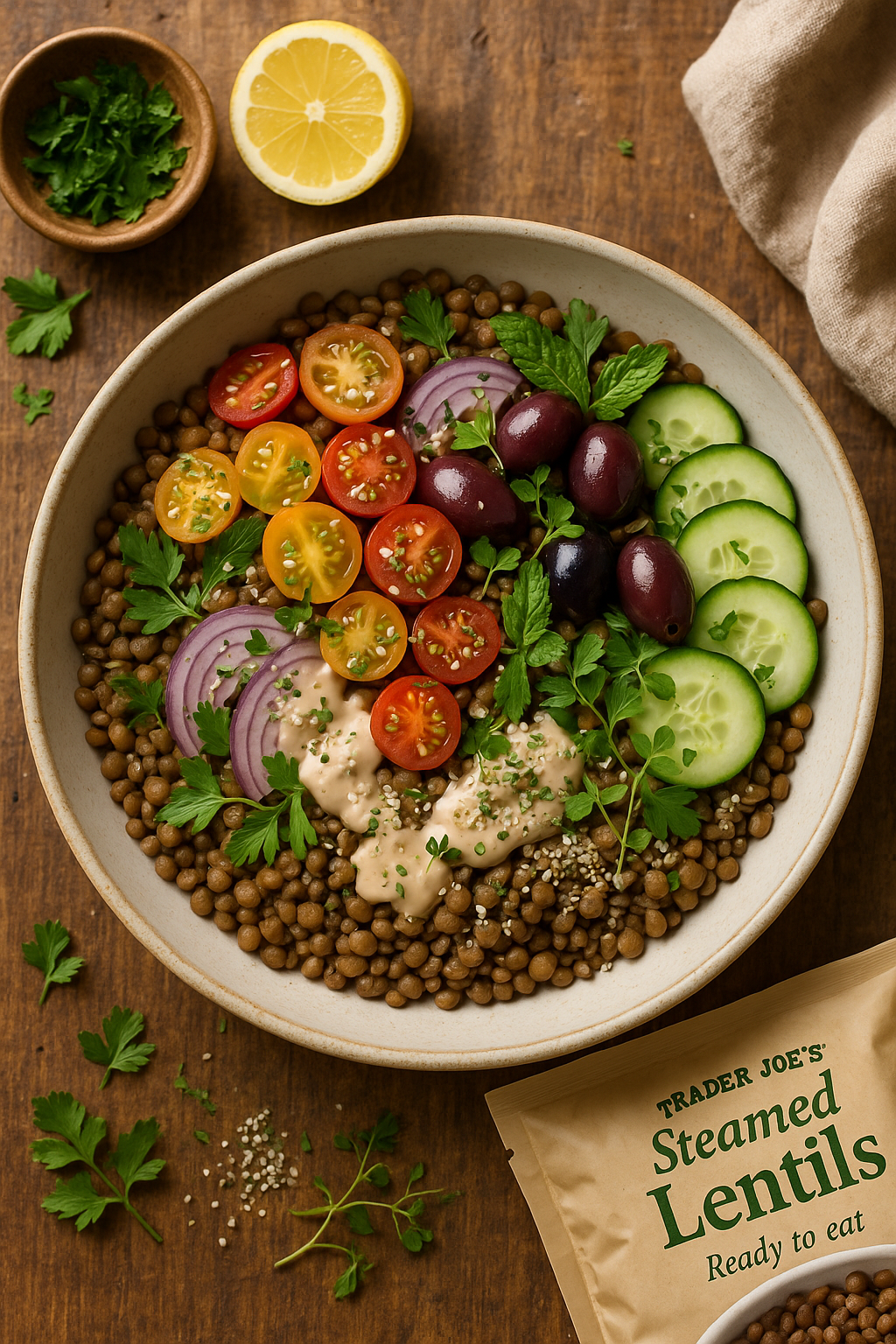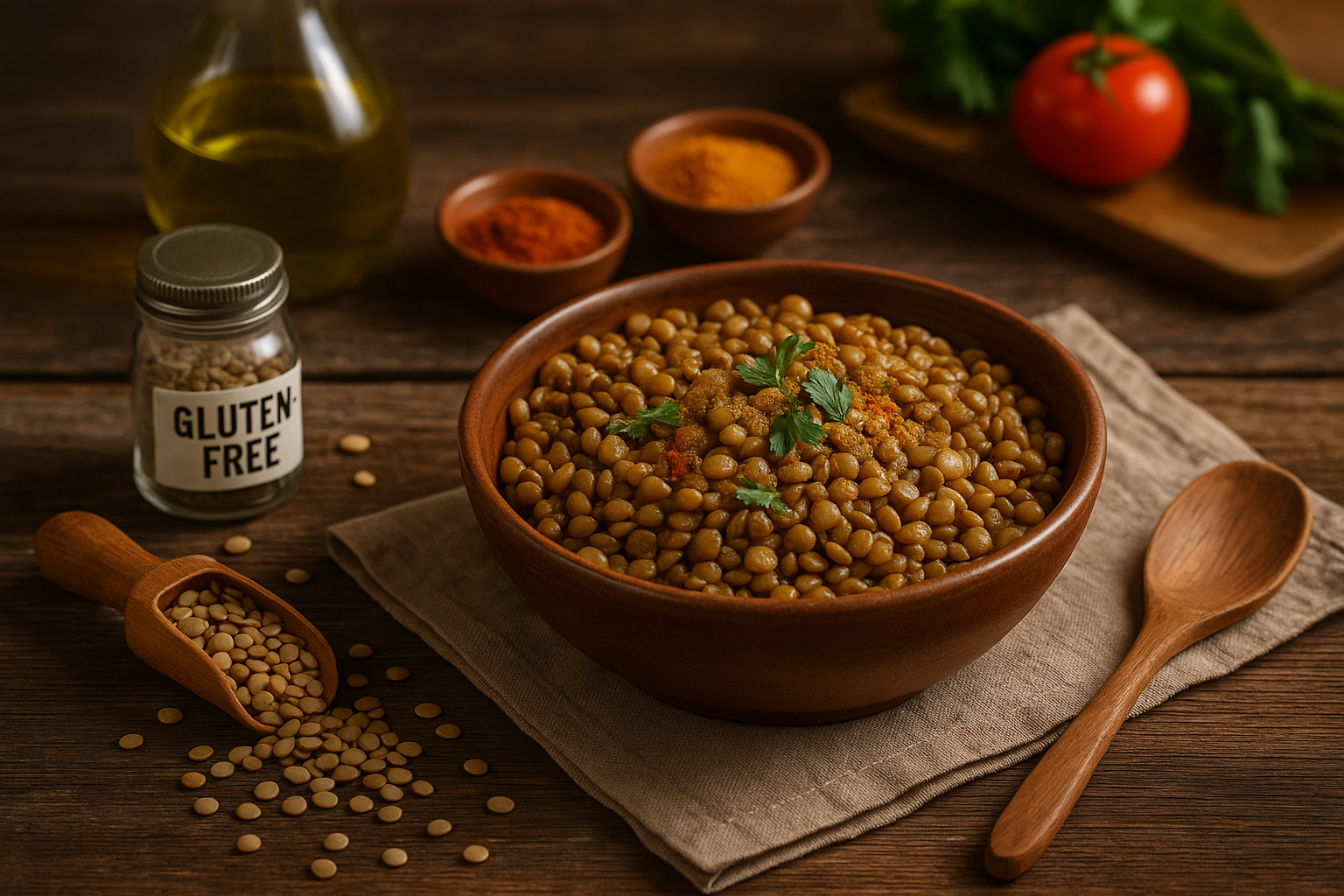I’ll never forget standing in the organic foods aisle at Whole Foods in March 2023, staring at a box of bright green noodles that cost $6.99. The package promised 24 grams of protein per serving, and honestly, I thought it was too good to be true. That skeptical purchase changed everything about how I eat, feel, and think about noodles.
The past 18 months have been a wild ride of culinary experiments, health revelations, and more than a few kitchen disasters. What started as a quest to find healthier pasta alternatives has evolved into a complete dietary transformation. I’ve converted my mother-in-law, improved my marathon training recovery, and discovered that eating healthy doesn’t mean sacrificing the comfort foods I love.
Why I Switched to Edamame Noodles for My Fitness Goals
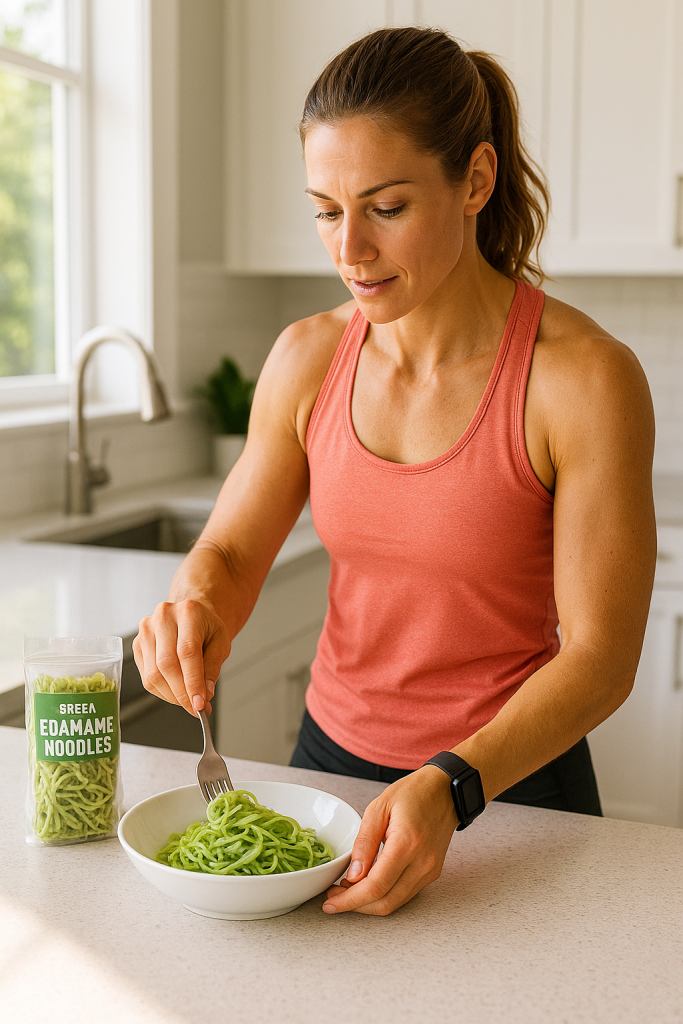
My relationship with traditional pasta ended badly. After each bowl of spaghetti, I’d crash on the couch for an hour, foggy-headed and sluggish. As someone training for half-marathons, this wasn’t working. My running coach suggested trying plant-based proteins, and that’s when edamame noodles entered my life.
The transformation was almost immediate. Within two weeks, I noticed my post-meal energy levels remained stable. No more 2 pm crashes after lunch. My running times improved by nearly 3 minutes per mile over the following months. According to a 2021 study in the Journal of Sports Nutrition, the complete amino acid profile in soy-based products provides optimal muscle recovery – something I was experiencing firsthand during my training schedule.
The Nutritional Powerhouse Behind These Green Noodles
Complete Protein and Fiber Content
Each serving delivers approximately 180 calories with 24 grams of protein and 11 grams of fiber. Compare that to regular pasta’s 8 grams of protein and 3 grams of fiber, and you’ll understand why my nutritionist was excited. The protein quality matters too – edamame contains all nine essential amino acids, making it a complete protein source. This discovery validated what I was feeling: sustained energy and better muscle recovery after my runs.
Micronutrient Profile and Health Benefits
The micronutrient profile impressed me even more during my research phase. I was getting 18% of my daily vitamin K needs, crucial for bone health that becomes increasingly important at 43. The manganese content supports metabolism and bone formation, while copper aids in iron absorption. My chronic iron deficiency had been a struggle for years, and three months after incorporating these noodles regularly, my ferritin levels increased from 22 to 47 ng/mL.

Cholesterol-Lowering Isoflavones
What really caught my attention was the isoflavone content. These plant compounds have been shown in clinical trials to reduce LDL cholesterol by up to 5%, according to FDA-approved health claims. My own cholesterol dropped from 198 to 172 mg/dL over six months. While I can’t attribute this entirely to the noodles, my doctor noted it was the only significant dietary change I’d made.
Blood Sugar Impact
The low glycemic impact changed my daily experience. My continuous glucose monitor revealed fascinating data: traditional pasta spiked my blood sugar to 165 mg/dL, while edamame noodles peaked at just 118 mg/dL. This explained why I could finally make it through afternoon meetings without fighting to stay awake.
How to Cook Edamame Noodles Perfectly
The Perfect Cooking Time
Remember that “green mush” incident I mentioned? Let me save you from my mistakes. My first attempt involved boiling them for the full eight minutes suggested on the package. Big mistake. They turned into a slimy, overcooked disaster that my husband politely pushed around his plate before suggesting pizza.
Through painful experience, I’ve learned that six minutes is the sweet spot. I set a timer obsessively now – even 30 seconds too long and the texture suffers. The water ratio matters more than with wheat pasta; I use a full gallon of rapidly boiling water for an 8-ounce package.
The Game-Changing Pot That Eliminates Kitchen Wrestling
After the green-mush disaster I mentioned, I realized how essential having cookware that works with your noodles — not against them. The All-Clad Simply Strain 6-quart Multipot with straining lid streamlines boiling, draining, and steaming all in one smart, high-end pot. It’s the kind of upgrade your kitchen deserves — and once you try it, you’ll never want to go back to wrestling with colanders.

All-Clad Simply Strain Stainless Steel Multipot with Straining Lid, 6-Quart, Induction, Oven Broiler Safe 600F, Strainer, Pasta Strainer with Handle, Steamer Pot, Cookware, Home, Pots and Pans, Silver
- The Simply Strain 6-quart Multipot combines the durability and performance of stainless steel with a built in straining lid for hassle free cooking. This kitchen staple is ideal for straining liquids as well as crafting delicious one pot meals.
- The innovative straining lid locks in place for easy draining of liquids after boiling or excess fat after browning meats.
- Constructed of durable stainless-steel and features a heavy duty stainless steel base for warp free cooking.
- Responsibly crafted with recycled stainless-steel and polished to perfection for cookware that will look & perform for years to come. The extra wide handles provide a secure comfortable grip and allow for easy use with oven mitts.
Temperature and Rinsing Techniques
Temperature control was another hard-learned lesson. I discovered that starting them in cold water results in gummy noodles. They need that vigorous boil from the moment they hit the water. I also add a tablespoon of salt to the water, despite the package not mentioning it – this enhances their natural umami flavor.
My biggest breakthrough came from rinsing. Unlike traditional pasta, I rinse these thoroughly under cold water immediately after draining. This stops the cooking process and removes excess starch that can make them sticky. For cold dishes, I even shock them in ice water for 30 seconds.
Flavor Enhancement Tips
The flavor profile took adjustment. They have an inherent earthiness, almost nutty, that wheat pasta lacks. I’ve learned to embrace this rather than fight it. Sesame oil became my secret weapon – just a teaspoon elevates their natural soy flavor beautifully. Garlic, ginger, and scallions work magic with these noodles in ways that transformed my cooking repertoire.
Quick and Delicious Preparations
My go-to quick meal now: sauté vegetables in toasted sesame oil, toss with the properly cooked noodles, add a splash of low-sodium soy sauce and rice vinegar. My son, who initially refused to eat “green worms,” now requests this weekly. The Italian fusion took longer to perfect. I found that lighter, oil-based sauces work better than heavy cream sauces. A simple aglio e olio with lots of garlic, red pepper flakes, and fresh parsley has become my Friday night staple.
Challenges You Should Know About
Initial Digestive Adjustment
Let’s address the elephant in the room: my digestive system revolted initially. The first week involved uncomfortable bloating and gas that made me question my choices. My gastroenterologist explained this is common when dramatically increasing fiber intake. Starting with smaller portions (4 ounces instead of 8) for the first two weeks helped my system adapt.
Cost Considerations
The cost hit harder than expected. My monthly grocery bill increased by approximately $47 when I calculated it. At $6-8 per box versus $1.50 for regular pasta, this wasn’t insignificant for my family budget. I’ve since found that buying in bulk from Costco (when they have them) reduces the cost to about $4.50 per box. Still pricey, but more manageable.

Availability and Taste Adaptation
Availability frustrated me constantly during my first six months. My local Kroger only carried one brand sporadically. I’ve now mapped out three stores in my area that stock them reliably, but this required planning I never needed for regular pasta. Online ordering became my backup, though shipping costs can be prohibitive.
The taste preference evolution was real. My husband took four months to genuinely enjoy them rather than just tolerating them. My mother-in-law still calls them “those weird green things,” though she ate them without complaint at Thanksgiving.
Dietary Restrictions and Sensitivities
For anyone with soy sensitivities, these are obviously a no-go. I learned this the hard way when my sister visited – her mild soy allergy caused enough discomfort that we had to have a serious conversation about hidden ingredients. Anyone on thyroid medication should also check with their doctor; my endocrinologist monitors my thyroid function every six months now.
The FODMAP issue caught me off guard. My friend with Irritable Bowel Syndrome (IBS) couldn’t tolerate them at all, experiencing severe symptoms. The oligosaccharides in soybeans can trigger digestive issues for sensitive individuals.
Smart Shopping and Meal Planning Strategies
Brand Recommendations and Quality Indicators
I’ve become embarrassingly knowledgeable about edamame noodle brands. Seapoint Farms offers the best texture in my experience, though Explore Cuisine runs a close second. I’ve tried seven brands total, keeping detailed notes in my phone like a noodle detective. The organic versions from Whole Foods taste nearly identical to conventional ones, so I save the $2 difference unless they’re on sale.
Quality indicators I’ve learned: check the protein content (should be at least 20 grams per serving), examine the ingredient list (should be primarily edamame beans and water), and avoid brands with added starches or fillers. The package should feel firm, not soft – softness indicates potential moisture exposure that affects texture.
Batch Cooking and Meal Prep
My meal planning transformed completely. Sunday afternoons, I batch-cook three boxes, portion them into containers, and refrigerate for quick weeknight meals. They last five days this way, saving me countless rushed weeknight moments. Tuesday’s leftover noodles become Wednesday’s cold Asian salad with peanut sauce. Thursday’s batch gets tossed with whatever vegetables survived the week.

The Blender That Turns Sauce-Making Into a 30-Second Victory
Batch-cooking edamame noodles has become one of my best time-savers, but the real game-changer was having a high-speed blender to whip up sauces, dressings, and even smooth sesame-ginger marinades in seconds. Investing in a powerful blender makes healthy cooking not just possible, but genuinely fun.

Vitamix 5200 Professional Grade Blender for Smoothies, Food Grinder and Emulsifier, 64oz Pitcher, Black
- Variable Speed Control: Easily adjust speed to achieve a variety of textures. The dial can be rotated at any point during the blend, so you’re in complete control
- Large Batches: The size and shape of the self-cleaning 64-ounce container is ideal for blending medium to large batches
- Hot Soup: The blades in the Vitamix container reach speeds fast enough to create friction heat, bringing cold ingredients to steaming hot in about six minutes
- Hardened Stainless-Steel Blades: Our aircraft-grade stainless steel blades are designed to handle the toughest ingredients, so from the first blend to the last, you get the same quality results
Family-Friendly Adaptations
The kid-friendly tricks I’ve developed would fill a book. Mixing half edamame noodles with half regular pasta helped my daughter transition. Adding nutritional yeast and a drizzle of olive oil (his comfort combo) made them acceptable. Now, 15 months later, he prefers them straight-up with my sesame-ginger sauce.
Proper Storage Methods
Storage wisdom came from mistakes. Keep them in their original sealed package until use. Once opened, transfer to an airtight container with a silica gel packet (saved from vitamin bottles). They’ll stay fresh for months this way. I learned this after finding a forgotten opened box turned stale and slightly off-smelling.
Healthy Edamame Noodle Bowl Recipe
Mediterranean-Asian Fusion Bowl
This recipe combines the best of both worlds, creating a nutrient-dense meal that’s become a weekly staple in my household.
Ingredients:
- 8 oz edamame noodles
- 2 cups cherry tomatoes, halved
- 1 cup cucumber, diced
- 1/2 cup kalamata olives, sliced
- 1/4 cup red onion, thinly sliced
- 2 cloves garlic, minced
- 2 tbsp extra virgin olive oil
- 1 tbsp rice vinegar
- 1 tsp toasted sesame oil
- 1/4 cup fresh basil, chopped
- 2 tbsp nutritional yeast
- 1/4 cup raw almonds, chopped
- Red pepper flakes to taste
- Salt and pepper to taste
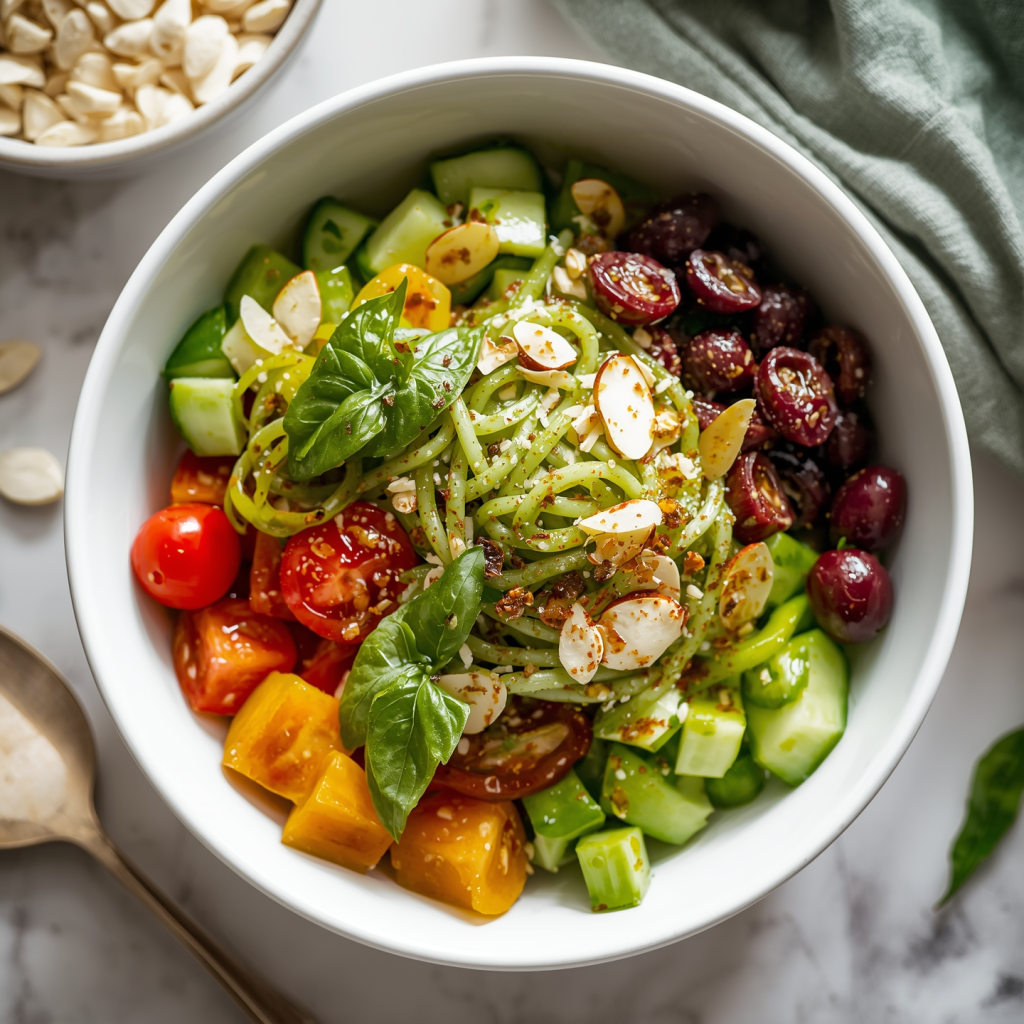
The Knife That Makes Every Chop Feel Like Chef Magic
When I started experimenting with Mediterranean-Asian fusion bowls, I realized how much easier (and more enjoyable) it is to slice vegetables thinly and evenly with a really good knife. A sharp, well-balanced Japanese chef’s knife turns chopping cucumbers, onions, and herbs into something that feels effortless — and it keeps those quick weeknight meals truly quick.

Shun Classic 8″ Chef’s Knife
- JAPANESE CHEF KNIFE: The Shun Classic 8-inch Chef’s Knife is expertly designed for a variety of kitchen tasks, from slicing and dicing to mincing, making it an indispensable tool for any cook.
- PIONEERING EXCELLENCE: Bring home a piece of the renowned Classic Series – the original authentic Japanese cutlery line introduced to the United States. Enjoy superior craftsmanship and innovative design.
- SUPERIOR SHARPNESS: Crafted with VG-MAX steel and 68 layers of Damascus cladding, this knife delivers razor-sharp precision with a 16-degree edge, ensuring long-lasting performance.
- COMFORTABLE DESIGN: The D-shaped Pakkawood handle offers a comfortable and secure grip, providing optimal control for both left and right-handed users.
Instructions:
- Cook edamame noodles for exactly 6 minutes in boiling salted water
- Drain and rinse under cold water for 30 seconds
- In a large bowl, whisk together olive oil, rice vinegar, sesame oil, and garlic
- Add drained noodles, tomatoes, cucumber, olives, and red onion
- Toss well and let sit for 5 minutes to absorb flavors
- Top with fresh basil, nutritional yeast, and chopped almonds
- Season with red pepper flakes, salt, and pepper
- Serve at room temperature or chilled
This bowl provides 32 grams of protein, 15 grams of fiber, and a complete amino acid profile while delivering Mediterranean antioxidants and healthy fats.
The Future of Plant-Based Pasta Alternatives
Market Growth and Price Trends
The edamame noodles market is exploding – I’ve watched it happen in real-time at my local stores. What was one lonely brand 18 months ago is now an entire shelf section. I predict we’ll see price competition driving costs down within two years, making this option accessible to more families like mine.
Product Innovation on the Horizon
Innovation excites me. I’m hearing rumors of edamame-chickpea blends and flavored varieties. My hope is for a lasagna-sheet version so I can finally recreate my grandmother’s recipe without the blood sugar spike. The environmental impact matters to me too – soy farming uses significantly less water than wheat, and the carbon footprint is smaller according to environmental impact studies I’ve researched.
Community Building and Education
My commitment extends beyond personal use now. I’ve started a monthly potluck group where we share plant-based recipes, with edamame noodles featured prominently. My goal is developing ten new fusion recipes this year, with Asian influences. I’m documenting everything, tracking health metrics quarterly, and building a database of what works.
Environmental and Health Advocacy
The sustainability angle drives my advocacy. Knowing that my food choices contribute to reduced environmental impact while improving my health creates a positive feedback loop. I’ve started talking to local restaurant owners about incorporating these noodles into their menus – two small cafes near me now offer them as an alternative.
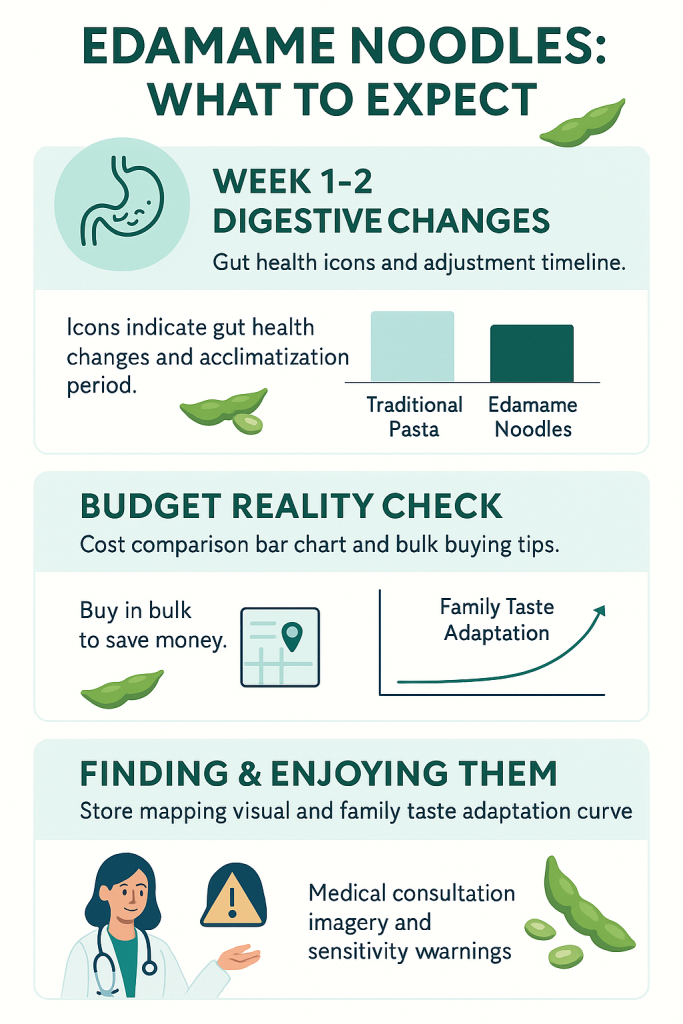
My Transformation After 18 Months
Looking at my 18-month experience, the transformation goes beyond nutrition. I’ve discovered a culinary adventure, improved my health markers measurably, and found a sustainable way to enjoy comfort food without guilt. My energy levels stabilized throughout the day, and my marathon personal record improved by eight minutes.
The noodles themselves are just a green pasta alternative, but what they represent – mindful eating, health optimization, and environmental consciousness – has reshaped my entire relationship with food. Every time I boil water for that precise six minutes, I’m choosing a future where I can keep running marathons, keep up with my daughter, and maybe inspire others to find their own plant-based revelation.
This experience aligns perfectly with the plant-based principles at My Nutrition Foods, demonstrating how simple dietary swaps can create profound health improvements while supporting environmental sustainability. The combination of complete protein, low glycemic impact, and nutrient density makes edamame noodles an ideal choice for anyone seeking to optimize their nutrition through plant-based options.
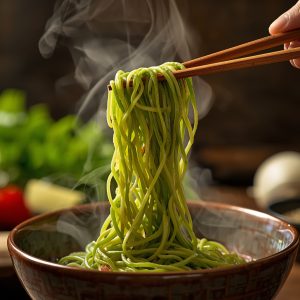
*We may earn a commission for purchases made using our links. Please see our disclosure to learn more.

